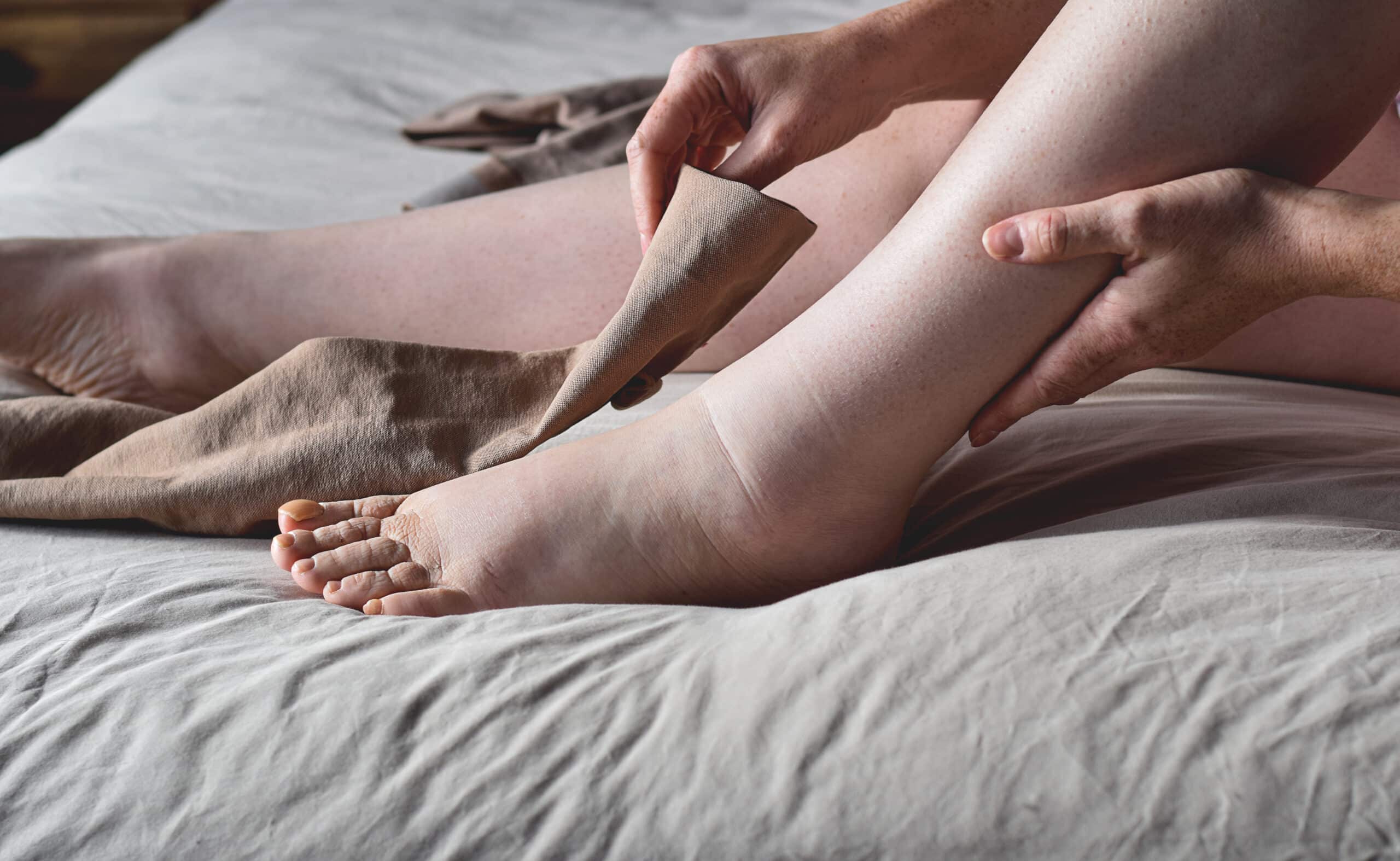Your body contains a fluid called lymph, which flows through lymph vessels. When too much lymph fluid collects in the body tissues, you can develop…
Living With Lymphedema in the Legs: Five Things To Know

Your body contains a fluid called lymph, which flows through lymph vessels. When too much lymph fluid collects in the body tissues, you can develop swelling called lymphedema.1
It can happen in any part of your body, but the most common locations are the arms and the legs.2 Living with lymphedema in the legs can be challenging, so here’s some useful information that could help you cope with this condition.
Common Causes of Lymphedema
Lymphedema can occur due to a blockage in the lymphatic system (primary lymphedema) or as a complication of another condition (secondary lymphedema).3
Primary lymphedema is rare and can result from congenital conditions like Milroy’s disease and Meige’s disease.4 Secondary lymphedema is more common and often due to the following:5
- Traumatic injuries
- Obesity
- Heart conditions
- Kidney disease
- Blood vessel issues
- Infections
- Various surgical and radiation procedures
Symptoms To Watch Out For
Some of the most common lymphedema symptoms include:6
- Swelling and changes in limb size
- Sensations of heaviness or tightness
- Frequent infections
- Decreased range of motion
- Clothes and shoes feel too tight
- Changes in the color and texture of the leg skin (e.g., skin thickens or hardens)
- Pain, discomfort, or tingling in the legs
- Severe fatigue
Stages of Development
Lymphedema in the legs develops in stages:7
- Stage 0: You may feel tightness or heaviness in your legs, but there are no obvious signs of swelling.
- Stage 1: Your legs may swell up occasionally, but the swelling quickly reduces upon elevating the legs.
- Stage 2: Your legs are almost always swollen, and the skin in the swollen areas may feel tighter and firmer than the surrounding regions.
- Stage 3: Your legs are likely to be significantly swollen, and the skin of the swollen areas may change color and texture.
Treatment Options
Nonsurgical treatments include physical therapy, exercise, limb elevation, and the use of gradient compression stockings or bandages.
Surgical treatments for your legs include debulking, lymph node transfer, and lymphatic bypass procedures.8
Minimizing Lymphedema Risk
Here are some tips to lower your chances of developing lymphedema:9
- Avoid spending a lot of time in areas with extreme temperatures.
- Exercise regularly to maintain your ideal body weight and keep the fluids in your body moving.
- Avoid wearing tight clothing or footwear and sharp jewelry.
- Minimize your salt intake.
- Watch out for chaffing, blisters, abscesses, cuts, scrapes, burns, or other open wounds that could lead to swelling.
- Use moisturizer and sunscreen to protect against skin damage.
- Walk around frequently, but don’t walk barefoot.
- Self-examine your body (particularly your legs) regularly to check for minor changes to receive timely treatment.
- If you notice any swelling, immediately elevate your limbs above your heart.
- If you need any procedures that can increase your risk of swelling, ask your healthcare providers about exercises to improve the flow of your body fluids.
Lymphedema is closely tied to another condition called varicose veins, in which weakened blood vessel valves allow blood to pool in your veins, enlarging them. This condition is also most commonly seen in the lower limbs.
Because both conditions impact the circulation of body fluids, they often present with similar symptoms (especially swelling) and can have similar causes like trauma and obesity. It’s possible to have both conditions at once, so don’t hesitate to consult your doctor if you suspect either lymphedema or varicose veins.10 Early treatment can be crucial for maximizing your mobility.
Learn More About Vein Health Today
You can manage lymphedema in the legs if you know what symptoms to look for, when to seek consultation, and what treatments are available. Check out My Vein Treatment for more helpful information on vein issues like lymphedema and varicose veins.
SOURCES:
- Cleveland Clinic: “Lymphedema.“
- Cleveland Clinic: “Lymphedema.“
- Medical News Today: “What is lymphedema?“
- Cleveland Clinic: “Lymphedema.“
- Medical News Today: “What is lymphedema?“
- Medical News Today: “What is lymphedema?“
- Cleveland Clinic: “Lymphedema.“
- Cleveland Clinic: “Lymphedema.“
- MSKCC: “Reducing Your Risk of Lymphedema of the Legs.“
- Tactile Medical: “Varicose Veins & Lymphedema: How Are They Connected?“





